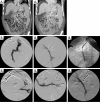A review of current status of living donor liver transplantation
- PMID: 27115004
- PMCID: PMC4824745
- DOI: 10.3978/j.issn.2304-3881.2015.08.04
A review of current status of living donor liver transplantation
Abstract
Living donor liver transplantation (LDLT) has become an inevitable procedure in Asia due to its shortage of deceased donor under the influence of the religion and native cultures. Through a broad variety of experience, LDLT has been evolved and extended its indication. Although there have been many surgical and ethical efforts to prevent donor risk, concerns of donor's safety still are remaining questions due to its strict selection criteria. Therefore, dual grafts LDLT or ABO incompatible (ABO-I) LDLT may be effective means in its application and safety aspect. Many Asian LDLT centers have pointed out the useful extended criteria of LDLT for hepatocellular carcinoma (HCC), but the applicability of extended criteria should be validated and standardized by worldwide prospective studies based on the Milan criteria. Recent struggling efforts have been reported to surmount extensive portal vein thrombosis and Budd-Chiari syndrome which were previously contraindicated to LDLT. There is no doubt that LDLT is a surely complicated therapy to be performed successfully and requires devoted efforts by surgeons and co-workers. Nonetheless, comprehensive increasing understandings of partial graft LT and improvements of surgical techniques with challenges to obstacles in LDLT will make its prosperity with satisfactory outcomes.
Keywords: Living donor; current status; liver transplantation; surgical technique.
Conflict of interest statement
Figures





References
-
- Song GW, Lee SG. Living donor liver transplantation. Curr Opin Organ Transplant 2014;19:217-22. - PubMed
-
- Lee SG. A complete treatment of adult living donor liver transplantation: a review of surgical technique and current challenges to expand indication of patients. Am J Transplant 2015;15:17-38. - PubMed
-
- Trotter JF, Adam R, Lo CM, et al. Documented deaths of hepatic lobe donors for living donor liver transplantation. Liver Transpl 2006;12:1485-8. - PubMed
-
- Shin M, Song S, Kim JM, et al. Donor morbidity including biliary complication in living-donor liver transplantation: single-center analysis of 897 cases. Transplantation 2012;93:942-8. - PubMed
-
- Cheah YL, Simpson MA, Pomposelli JJ, et al. Incidence of death and potentially life threatening near miss events in living donor hepatic lobectomy; a world-wide survey. Liver Transpl 2013;19:499-506. - PubMed
Publication types
LinkOut - more resources
Full Text Sources
